Lots of things happen unexpectedly. As a driver or car owner, you experience different things with your vehicle on a daily basis. One of them is getting a flat tire. When this happens, you can either run-flat and damage your wheels, go to the nearest repair shop (if there is), have your car towed, or you can simply use your spare tire (if you have one ready).
No one can predict when we'll need to use our spare tire and most of the time, it is stuck in the trunk and always out of sight. It is the main reason why it's also out of our minds too, most of the time.
Even if the spare tire is mounted on the rear part of SUVs, or in the driver's side of most jeepneys where it's seen in full view, it still doesn't get the attention it deserves, and most importantly, the air pressure it needs.
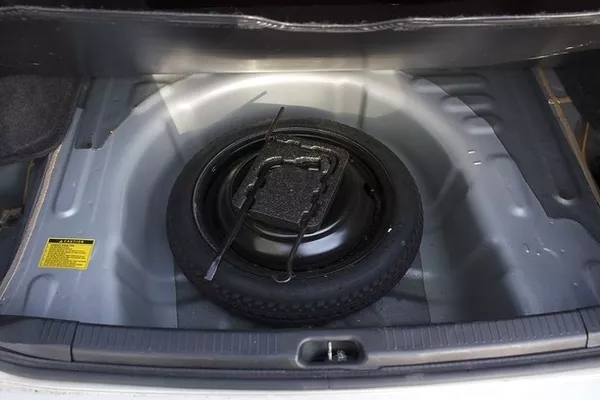
If you stuck your compact spare tire under the cargo floor for years, most probably it is already severely under-inflated
Over time, each tire on all vehicles loses air pressure. Remember that air permeates rubber. Even the nitrogen-filled tires lose pressure because nitrogen permeates rubber as well.
If you stuck your compact spare tire under the cargo floor, untouched for five years, most probably it is already severely under-inflated. If this is the case, there's a good chance that it will not be able to perform its duty of handling the stress and load of emergency road situations such as a flat tire. Take note that it's unsafe to use under-inflated tires. It doesn't have the same weight- carrying capacity as the fully inflated tire.
This article from Philkotse.com will tackle the most common spare tire problems you might encounter.
1. Types of the spare tire
Before we head directly to the different spare tire problems, we should first identify the different kinds of a spare tire. Knowing which type you have in your vehicle will help determine how long and how far you should drive before you buy a new tire.
Full-size spare tire
SUVs, trucks and other larger types of vehicles are commonly equipped with full-size spare tires. This type of tire is heavier and needs more space for storage. But when it comes to durability, you can trust a full-size spare tire the same way as the standard tire.
But there are cases where the spare runs differently from the other three tires (maybe because it is a different tire type). If this is the case, it will create an unsafe drive because the wheel will handle the spare differently than the other three tires. The best thing to do is to buy a new tire as soon as you can afford to.
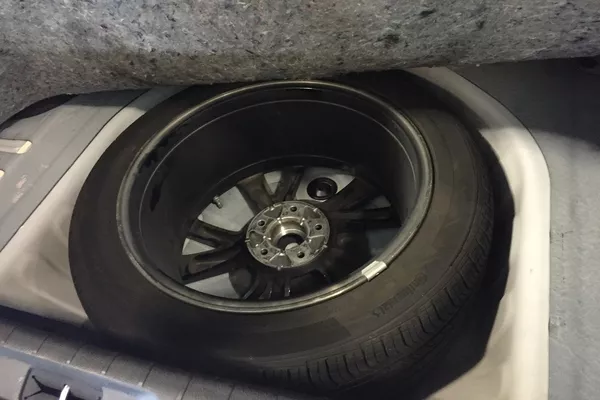
SUVs, trucks and other larger types of vehicles are commonly equipped with full-size spare tires
>>> Check out:
- [Philkotse reveal] Why carmakers are ditching the spare tire?
- [Philkotse guide] Everything you need to know about self-inflating tires.
Donut/Safe-saver Spare Tire
This type of tire is narrow and compact spares. It is designed to save weight and space in the car. It enables car makers to create smaller vehicles. However, donut spare tire is a quick fix and is not made to last, mainly because this type of tires have little to no tread.
It makes the spare more vulnerable to projectiles and road hazards. It's also a bit smaller compared to regular tires which makes it spin faster to keep up with the running vehicle. You should refer to your owner's manual for its recommended driving time and speed.
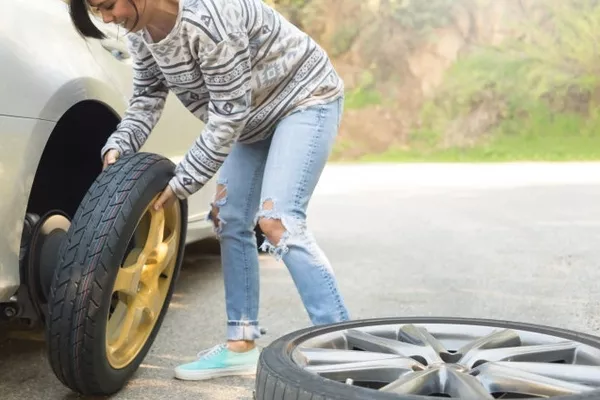
Donut spare tire is designed to save weight and space in the car
Run-flat tires
This type of tires is becoming more popular and more common because automakers realized they are cheaper to maintain compared to traditional tires. Run-flat tires are tougher than the regular ones; however, they aren't designed to last forever.
These tires are made to withstand road hazards, punctures included. A run-flat tire allows drivers to continue driving even after a puncture. It can be run-flat for about 80 kilometers before the need to be replaced. With these characteristics, expect that replacement of run-flat tires will cost more than the traditional tires.
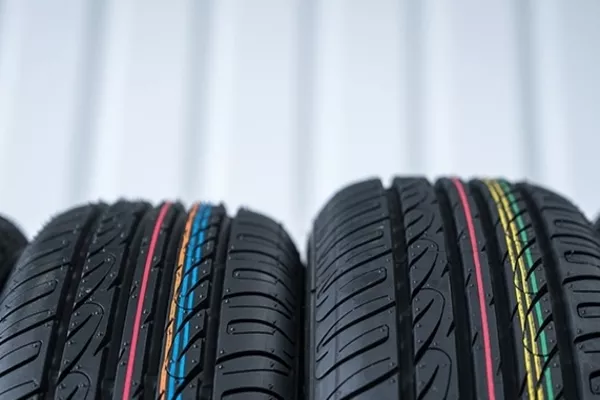
Run-flat tires are tougher than the regular ones; however, they aren't designed to last forever
>>> Read more: Benefits & drawbacks of tubeless tires, Run-flat tires & self-inflating tires.
2. Inflation and rotation
Compact spare tires are different from your car's regular tires. Compact spare tires should be inflated to around 27 kilograms per square inch. If the PSI of your spare tire is less than the given level, it can possibly fail, thus damaging the wheel. Keep in mind that even a fully inflated spare tire is only a temporary fix, but can drive up to 160 kilometers at a speed of no more than 80 kilometers per hour.
Certain repair shops perform tire rotations also routinely inspect the inflation levels of all the four tires of the car. However, the spare is usually ignored. So it's up for the car owners to ask the shop to check their spare tire as well. It is recommended that all car owners ask their shops to check their spare tire as well. Car owners can actually do it by themselves twice a year.
>>> You might want to know: Tire rotation: Everything that Filipino drivers need to know.
3. How to take care of spare tires mounted outside
For jeepneys, trucks and SUV, their spare tires are often installed under the cargo area, or on the liftgate. These places are exposed to water, salt and dirt, which cause corrosion. It will make it difficult for you to operate cables and latches or unmount the mounting hardware in an emergency. You need to inspect and clean or lubricate it periodically. Doing so will make it easier for you to access and remove the spare tire when your tire goes flat.
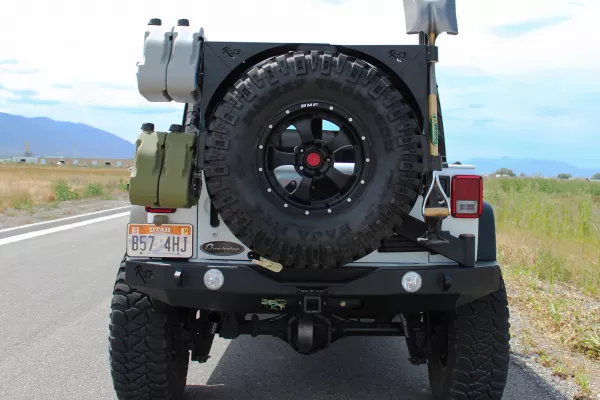
Some spare tire are mounted at places that are exposed to water, salt and dirt, which cause corrosion
Lastly, if you are the type of person who keeps the cargo or trunk loaded with unnecessary items, take note that you will have to get rid of all your stuff before you can access the jack and spare tire.
Then you have to put the flat tire back after you finish changing the tires. If your compact spare tire can fit in your cargo together with that unnecessary stuff, it's a different thing when it comes to the flat tire.
The flat, filthy and full-sized old tire and wheel will not be able to fit in the same space, which means, it will have to share space with the items in your cargo. We suggest that you keep a trash bag in your vehicle, big enough to cover the flat tire. It will prevent the flat tire from dirtying the cargo, trunk or even the cabin.
>>> FYI: 10 kinds of tire wear can indicate a car’s general condition.
4. How about cars that don’t have spare tires?
Most car manufacturers are now ditching spare tires. Instead of spare tires, they equip their modern vehicles with tire inflator kit. If your car has a tire inflator kit, you can still encounter different problems as follow:

If your car has a tire inflator kit, you can still encounter different problems
- The sealant’s capability to seal all the tire puncture depends on the location and severity. It means not all tire punctures can be solved using the sealant.
- The sealant injected into the tire usually has an expiration date - commonly 4 years or less if the sealant is new.
- After the expiration date, the sealant might not be able to do its intended purpose, so you have to replace it with a new one.
Recent posts
- [Philkotse guide] All you need to know about winter tires Oct 08, 2019
- [Philkotse guide] Everything you need to know when having new tires Aug 09, 2022
- Tubeless Tire Technology for cars: All you need to know Nov 30, 2022
- Michelin and Bridgestone, whose tires are better? Aug 04, 2020
- Why are small car tires more beneficial? Jan 15, 2018












